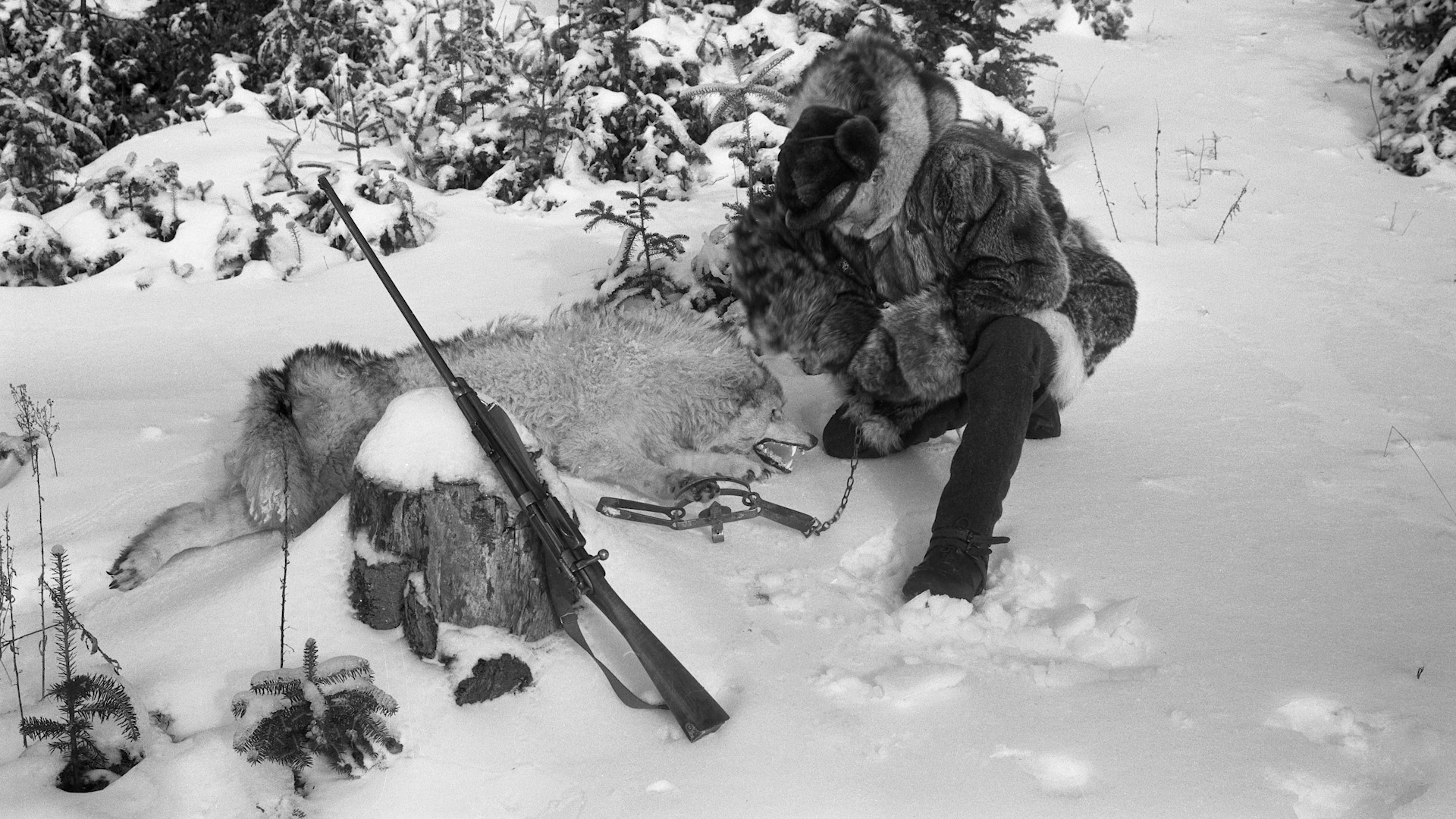A section of bollard fencing along the New Mexico–Mexico border. Photo by Luke Sharrett/Bloomberg via Getty
The fate of Donald Trump’s “great, great wall on our southern border,” which he’s vowed will stem the flow of all undocumented immigrants and drugs, currently hangs in limbo, as Congress battles over whether to fund the multibillion-dollar project. But quietly, part of the wall is really being built, after a fashion anyway: An expansion of 18-foot Bush-era fencing is slated for construction next month.The Department of Homeland Security has waived 25 laws to jump-start construction projects in eastern New Mexico, the agency announced Tuesday. The laws are mainly environmental regulations that need to be brushed aside in order to begin building in the Chihuahua Desert, one of the most biologically diverse deserts in the world.“Border Patrol must have a more effective means of deterring and preventing illegal crossings,” the DHS secretary, Kirsten Nielsen, said in her Monday notice about the waiver, which will cover a 20-mile stretch running east from Santa Teresa. This area, part of Border Patrol’s El Paso Sector, is “an area of high illegal entry” where 25,000 border crossers, 67,000 pounds of marijuana, and 157 pounds of cocaine were apprehended in fiscal year 2016, Nielsen said in her announcement.“There is presently a need to construct physical barriers and roads in the vicinity of the border of the United States to deter illegal crossings,” Nielsen continued.

The waived laws include the National Environmental Policy Act, which requires agencies to assess the environmental impact of all major projects; the Clean Water Act, which prevents discharging pollutants into navigable waters; the Clean Air Act, which regulates emission of hazardous pollutants into the air; and the Endangered Species Act, which protects imperiled species and their habitats.Nielsen also waived regulations preserving the cultural heritage of Native Americans, including the Native American Graves Protection and Repatriation Act, the American Indian Religious Freedom Act, and the National Historic Preservation Act.Ignoring these laws helps “ensure expeditious construction” of more steel bollard structures to prevent border crossings, Customs and Border Protection spokesman Carlos Diaz told me. This barrier, expanding upon roughly 700 miles of fence (or wall, depending on what you choose to call it) begun by the Bush administration, already received funding from Congress’s Fiscal Year 2017 budget, a House Appropriations Committee member confirmed to me.If Congress does reach an agreement to fund Trump’s wall—slated to be 30, instead of 18, feet tall—it is unclear whether CBP would use this waiver to apply to its construction, Diaz said. One of the wall prototypes DHS is considering is also made of bollard.Diaz maintained that despite waiving more than two dozen laws, CBP remains “committed to environmental and cultural stewardship” and that it consulted with federal and tribal agencies as well as nonprofit groups.“The fact the rules are waived doesn’t mean we’re going to disregard the environment,” he told me over the phone, and noted in an email that the agency “will utilize existing environmental data, perform additional environmental surveys, and use that information to assess potential impacts.” DHS has waived such laws in order to build border wall before—twice under the Trump administration and multiple times under the Bush administration beginning in 2005, noted Diaz.The agency is free to do so thanks to 2005's REAL ID Act, which included an provision allowing the DHS secretary to waive all local, state, and federal laws that would impede in building walls or roads along US borders. Since then, more than 40 laws have been waived using the act.“Congress commonly waives preexisting laws, but the new waiver provision uses language and a combination of terms not typically seen in law,” the Congressional Research Service noted in a 2009 report.To environmental advocates, these waivers are a blatant admission that the US’s current border fence has harmed the areas it passes through—and that Trump’s wall across the southern border would be disastrous for the region’s ecology.The planned new fencing in New Mexico could put rare wildlife species at risk, Kevin Bixby, the executive director of the nearby Southwest Environmental Center, told me. Among the species in the area are badgers, coyotes, pronghorn, bobcats, and mountain lions, he said.“This is going to prevent animals from going across the landscape to find water, which is very important in the Chihuahuan Desert, and it will make it harder for them to find mates,” said Bixby. “It will divide populations that span the border and create smaller more isolated populations. That’s a recipe for extinction.”Brian Segee, a senior attorney for the Center for Biological Diversity species program, told me that wildlife will be harmed whether this barrier is like the Bush administration’s 18-foot bollard wall or taller and more solid like what Trump has proposed.“Whatever manner of fencing that is put there will have environmental impacts and prevent wildlife movement where such wildlife wasn't prevented before,” said Segee.Segee and the Center for Biological Diversity, along with the state of California, have sued to block DHS’s recent waiver to construct 14 miles of bollard wall in the San Diego area. But three legal challenges to waivers in the Bush era were unsuccessful, since the REAL ID Act creates sweeping protections for the waiver power, Segee explained. A waiver can only be challenged on constitutional grounds, and if a district court rules in favor of the waiver, only the Supreme Court can hear the case.Already dozens of wildlife species have been impacted by the Bush-era fence that spans about one-third of the border, researchers in 2011 documented. The fence has divided 45 species in specialized habitats, leaving the majority of the species on one side of the barrier and the other side isolated, University of Texas researcher Jesse Lasky found. And in Arizona, scientists found that puma and coati were far more likely to appear in areas away from border fencing.But most environmental impact has not been tracked, since the US government “threw laws in the trashcan” that would provide for such documentation, said Dan Millis, a program manager with the Sierra Club’s Borderlands Project.Millis has also expressed concern about the new wall’s impact on climate change if the structure is built with cement, a source of greenhouse gas emissions. And on the Texas-Mexico border, where the border wall is slated to bisect a butterfly sanctuary and wildlife refuge, residents fear flooding could increase just south of the barrier, which would sit beside the Rio Grande river.By waiving the Native American Graves Protection and Repatriation Act and the American Indian Religious Freedom Act, the federal government is also trampling tribal land claims, said Ezra Rosser, a law professor at American University who specializes in Native American economic development and law. “There could be even fairly far removed tribes that we now don't think of as being on border that may have some claim to the land,” Rosser told me. “Congress intended to provide such protections.”But in the name of national security, these waivers are absolutely necessary to erect border barriers swiftly and efficiently, said Jayson Ahern, former acting commissioner of customs and border protection under the Bush administration. Ayhern said the agency still considered the environment when issuing such waivers, but that the environmental regulations were “long and onerous and could take years” to fulfill before building.“There is a conscious decision made to make sure you protect human life as well as communities in those border areas,” Ayhern told me, explaining that when he worked under waivers he still evaluated environmental impacts. “It doesn't concern me because I know the process going back, and I know the people involved, and that they're looking at processes in place to secure border and to secure the homeland, but not to do foolish things that would disregard the environment or wildlife.”Ayhern said that in many cases, a border barrier actually “improved areas that had been stomped on and littered upon.”“You have illegal border crossings occurring in these environmentally protected lands, and you see destruction because of people entering country, making temporary camps and playing hide and seek with Border Patrol,” he said.Veteran Border Patrol Agent Kent Lundgren, who co-founded the National Association of Former Border Patrol Officers, said the US government should prioritize blocking undocumented immigrants and drugs, and that the wilderness would remain strong.“More than just being a barrier which [a wall] can usefully be, it is a message to a government south of us that does not recognize that border as a legitimate impediment to free passage,” Lundgren told me. “Wildlife adapt. I've worked outdoors my life, and if you put an impediment to an animal passage they find a way to cope with that.”An earlier version of this story misidentified one of the animals threatened by the planned fencing—it's the pronghorn not the longhorn. Additionally, David Millis's name was initially misspelled.Sign up for our newsletter to get the best of VICE delivered to your inbox daily.Follow Meredith Hoffman on Twitter.
Advertisement

The waived laws include the National Environmental Policy Act, which requires agencies to assess the environmental impact of all major projects; the Clean Water Act, which prevents discharging pollutants into navigable waters; the Clean Air Act, which regulates emission of hazardous pollutants into the air; and the Endangered Species Act, which protects imperiled species and their habitats.Nielsen also waived regulations preserving the cultural heritage of Native Americans, including the Native American Graves Protection and Repatriation Act, the American Indian Religious Freedom Act, and the National Historic Preservation Act.
Advertisement
Advertisement
Advertisement
Advertisement
Advertisement
